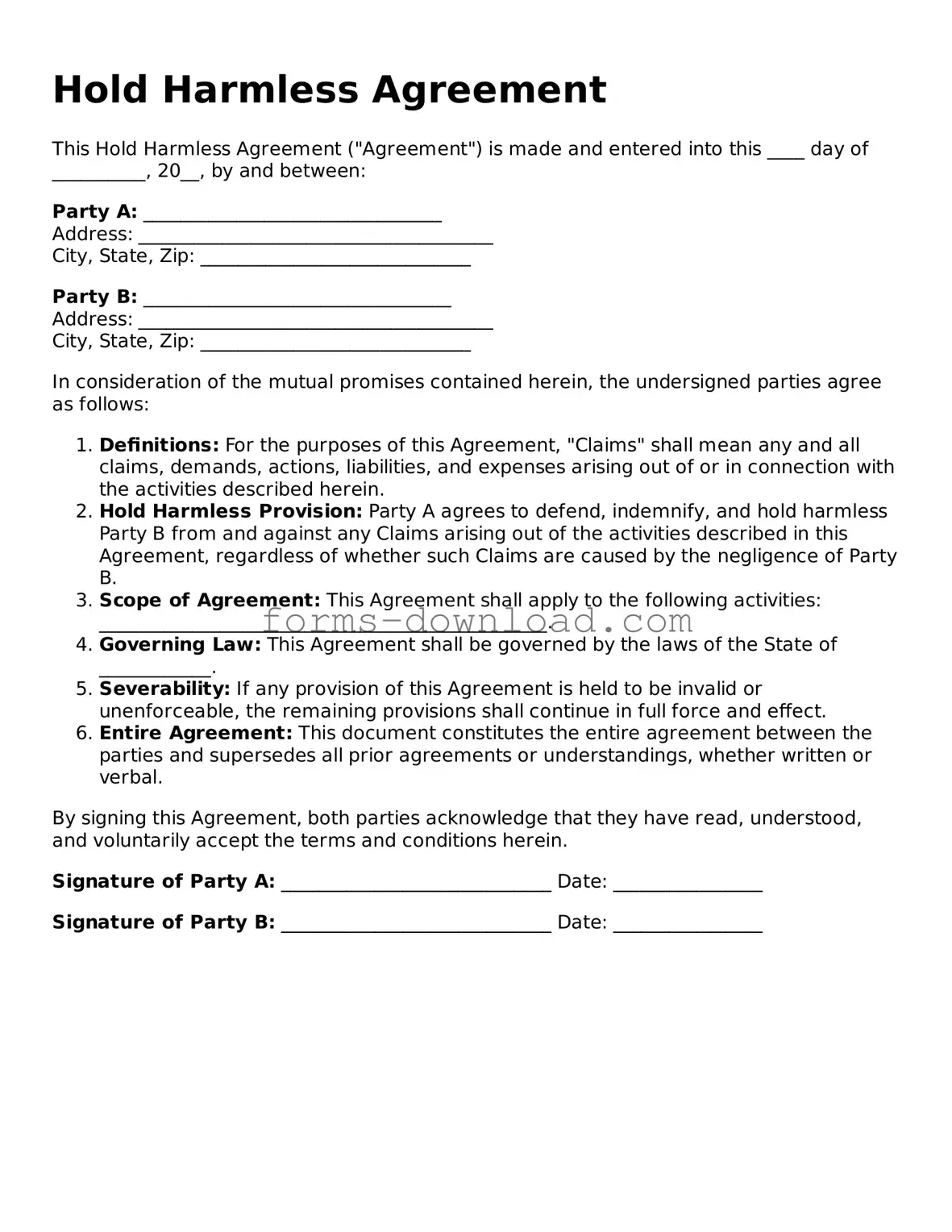Hold Harmless Agreement
This Hold Harmless Agreement ("Agreement") is made and entered into this ____ day of __________, 20__, by and between:
Party A: ________________________________
Address: ______________________________________
City, State, Zip: _____________________________
Party B: _________________________________
Address: ______________________________________
City, State, Zip: _____________________________
In consideration of the mutual promises contained herein, the undersigned parties agree as follows:
- Definitions: For the purposes of this Agreement, "Claims" shall mean any and all claims, demands, actions, liabilities, and expenses arising out of or in connection with the activities described herein.
- Hold Harmless Provision: Party A agrees to defend, indemnify, and hold harmless Party B from and against any Claims arising out of the activities described in this Agreement, regardless of whether such Claims are caused by the negligence of Party B.
- Scope of Agreement: This Agreement shall apply to the following activities: ________________________________________________.
- Governing Law: This Agreement shall be governed by the laws of the State of ____________.
- Severability: If any provision of this Agreement is held to be invalid or unenforceable, the remaining provisions shall continue in full force and effect.
- Entire Agreement: This document constitutes the entire agreement between the parties and supersedes all prior agreements or understandings, whether written or verbal.
By signing this Agreement, both parties acknowledge that they have read, understood, and voluntarily accept the terms and conditions herein.
Signature of Party A: _____________________________ Date: ________________
Signature of Party B: _____________________________ Date: ________________
